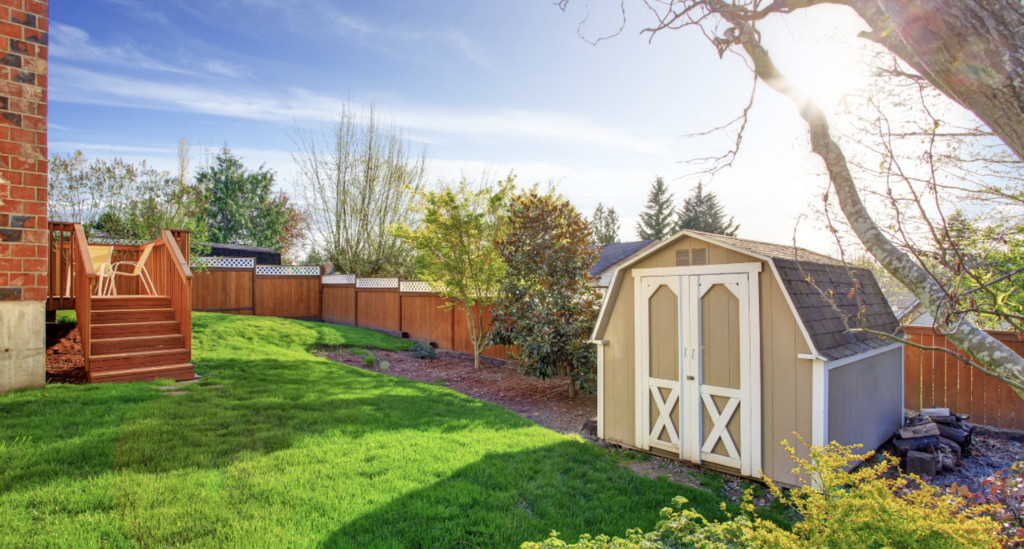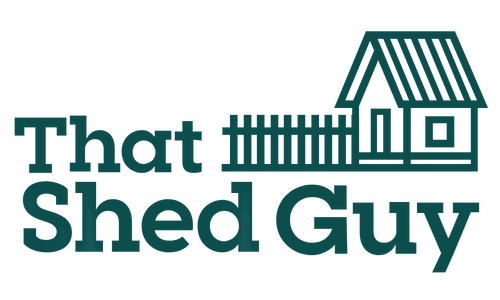Curious homeowners often find themselves pondering the question: ‘How many sheds can I have on my property?’ When it comes to adding extra storage space or creating work areas, understanding the regulations that dictate shed construction on your property is essential. Local guidelines, zoning laws, and even homeowner association rules can significantly influence the number of sheds you’re allowed to have.
In this article, we’ll delve into the nuances of shed regulations, helping you navigate the landscape and ensure you’re well-informed before embarking on any construction endeavors.

Understanding Local Regulations
In the state of Maryland, comprehending local regulations and zoning laws is fundamental when considering the installation of sheds on your property. These regulations hold significant importance as they govern the permissible number of sheds you can have. While the principles generally align with the goal of preserving aesthetics, safety, and property values, it’s essential to note that shed regulations can vary extensively from county to county within Maryland.
Navigating zoning laws and regulations in Maryland is crucial when determining the number of sheds you can have on your property. These regulations are designed to ensure the orderly development of communities while considering factors such as safety, aesthetics, and land use. Let’s explore the key aspects of zoning laws that impact shed construction in Maryland.
Shed Classification and Types
Sheds can fall under various classifications, such as temporary, permanent, or accessory structures. Maryland’s zoning laws often distinguish between these classifications, with different rules applying to each. Temporary structures, for example, might have different restrictions compared to permanent ones. Understanding how your shed is classified can provide insights into the regulations that apply.
Setback Requirements
Setback requirements specify the minimum distance between a shed and property lines, neighboring buildings, or other relevant features. These regulations aim to prevent overcrowding and maintain a certain level of privacy. In Maryland, setback requirements can vary based on zoning districts and shed classifications. Being aware of these setback rules ensures that your shed is appropriately positioned on your property.
Permitting Process
Maryland requires a permitting process for shed construction. Depending on the size, type, and location of the shed, you might need to obtain specific permits from your county or municipal government. Permits ensure that your shed complies with local regulations, zoning laws, and building codes. Familiarizing yourself with the permitting process before starting construction is vital to avoid potential legal issues.
By understanding these zoning laws and regulations specific to Maryland, you can confidently plan and construct sheds on your property while adhering to the established guidelines that ensure the harmony of your property with its surroundings.

Shed Regulations in Maryland: Understanding Permits and Size Limits
In the state of Maryland, shed regulations are outlined to maintain the integrity of residential properties while ensuring safety and adherence to local zoning laws. If you’re considering adding sheds to your property, it’s crucial to be aware of the rules that govern their construction. Here’s what you need to know about shed permits, size limits, and additional requirements:
Permit Requirements for Shed Construction
Maryland’s shed regulations stipulate that only one shed measuring less than 150 square feet can be erected on a property without obtaining a permit. This means that if you’re planning to have a single shed within this size range, you may proceed without the need for an official permit. However, if you’re considering a larger shed or multiple sheds, the permit requirement comes into play.
Larger Sheds and Permitting Process
For sheds exceeding 150 square feet in size, an additional level of oversight is implemented. These larger sheds are required to have a permanent foundation in place and also necessitate obtaining a permit from the relevant local authorities. The permitting process ensures that your larger shed complies with all necessary regulations, including setback requirements, structural considerations, and aesthetic guidelines.
Electrical Service Inclusion and Electrical Permits
Should your shed project involve the installation of electrical service, such as lighting, power outlets, or other electrical components, an additional permit is mandated. This permit specifically covers the electrical work associated with the project and ensures that it meets safety standards and codes. It’s important to note that electrical work, even within a shed, requires proper permitting to safeguard both your property and those who will use the space.
Understanding these regulations empowers you to make informed decisions about shed construction on your Maryland property. By adhering to permit requirements and size limits, you ensure that your shed project aligns with local laws and contributes to the overall harmony and safety of your residential community. Before embarking on your shed construction journey, always remember to consult with your local zoning department to confirm the specific regulations applicable to your area.

Consideration of Property Use: Shaping Shed Regulations
The intended purpose of your sheds plays a pivotal role in determining the regulations and requirements that will apply to your construction project. Whether you’re envisioning additional storage, a creative workshop, or a functional living space, understanding how different uses can influence zoning and permitting considerations is crucial.
When it comes to storage sheds, regulations often emphasize size and aesthetics. Zoning laws may grant more leeway in shed dimensions, yet setbacks and overall appearance remain key factors. On the other hand, sheds intended as workspaces or studios might be subject to noise restrictions and machinery usage guidelines to maintain harmony with the neighborhood. Activities that involve electrical equipment might trigger a need for separate permits.
Habitable spaces within sheds, whether for guests or personal use, introduce a different set of rules. These structures could be categorized differently, potentially requiring adherence to building codes that ensure comfort and safety. Additionally, sheds designed for pool houses or outdoor entertainment might need to adhere to safety codes, particularly in relation to pool environments.
Effectively navigating shed regulations hinges on accurately conveying your shed’s intended purpose to local authorities. By doing so, you ensure that the guidance you receive aligns with your specific plans, leading to a shed that not only serves its intended purpose but also adheres to relevant regulations. Tailoring your construction approach to your shed’s purpose, while staying within community parameters, guarantees a successful addition that harmonizes functionality with compliance.
Ready to Create Your Perfect Shed?
If you’re excited about adding a new shed to your property, it’s time to turn your vision into reality with the help of our expert shed company. Whether you’re looking for additional storage, a dedicated workspace, or a charming outdoor retreat, our team is here to bring your ideas to life. Contact us today to get started!
